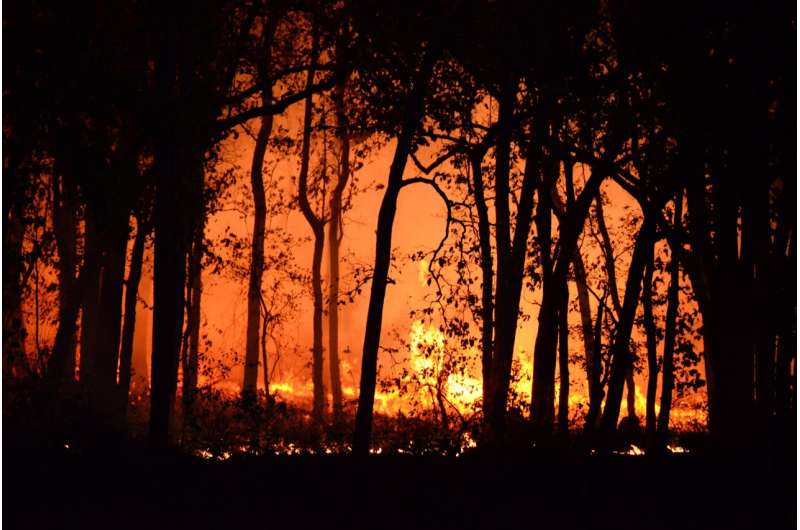
The frequency and intensity of extreme wildfires has more than doubled worldwide over the past two decades as human activity has warmed the planet.
The intensity of the 20 most extreme blazes in each year had also more than doubled—a rate that “appears to be accelerating”, the study said.
“I expected to see some increase, but the rate of increase alarmed me,” said the study’s lead author Calum Cunningham from the University of Tasmania in Australia.
“The effects of climate change are no longer just something of the future. We are now witnessing the manifestation of a drying and heating atmosphere,” he told AFP by email.
The six most extreme years in terms of intensity and frequency of wildfires have occurred since 2017, the study said.
2023 witnessed “the most extreme wildfire intensities” of the period studied.
Temperate conifer forests, which cover the western United States, saw an 11-fold increase in extreme fires over the two decades.
Earth’s northermost forests that cover Alaska, Canada and Russia saw a more than seven-fold rise.
The increasingly tinder-dry conditions that fuel massive fires have been linked to a changing climate.
But forests also absorb carbon from the atmosphere and the loss of trees to fire releases that CO2 back into the atmosphere where it contributes to global warming.
This creates a “feedback effect” on the planet, said Cunningham.
“It also blankets large regions in smoke, causing major health effects including many more premature deaths than are caused by the flames themselves,” he said.